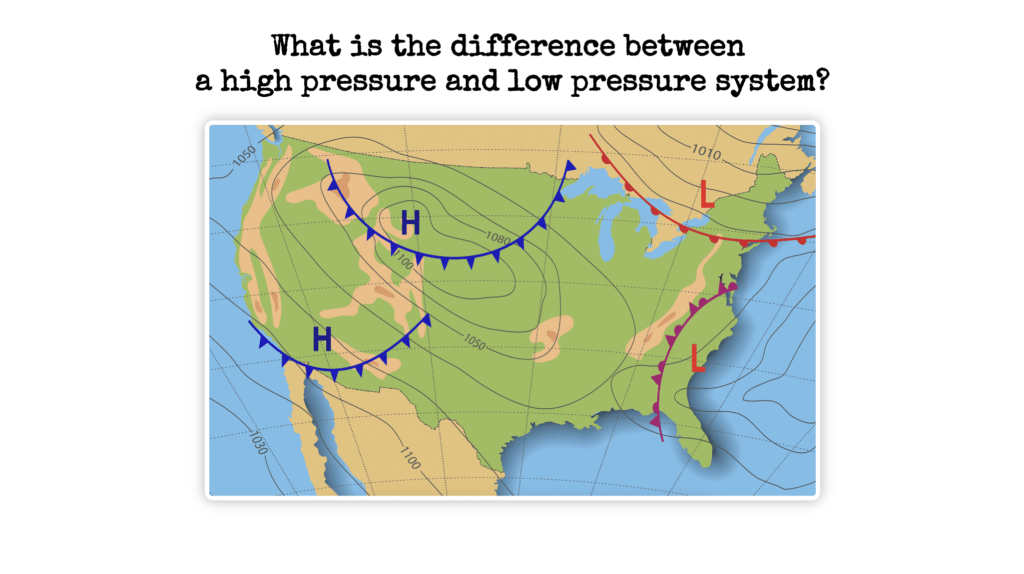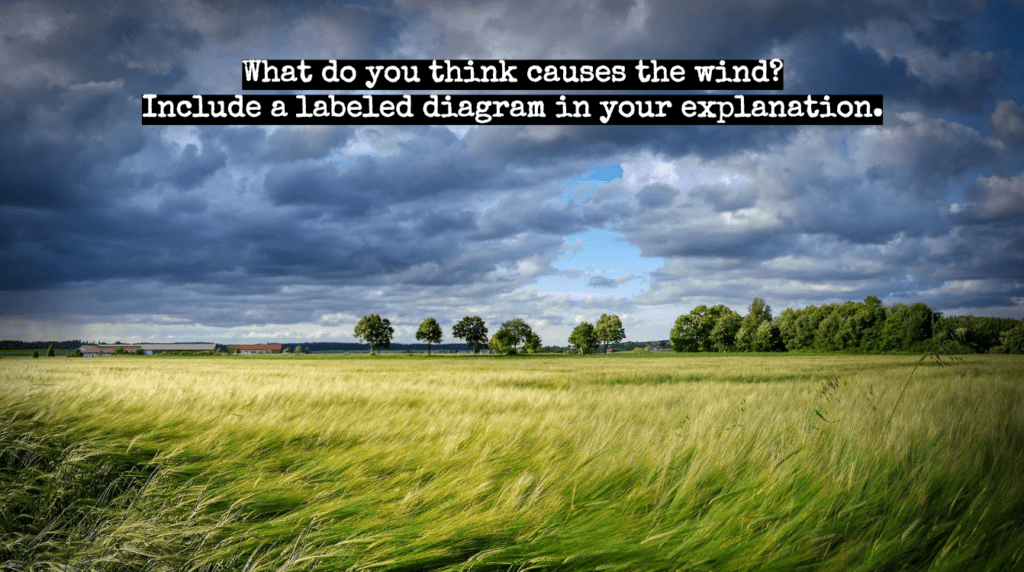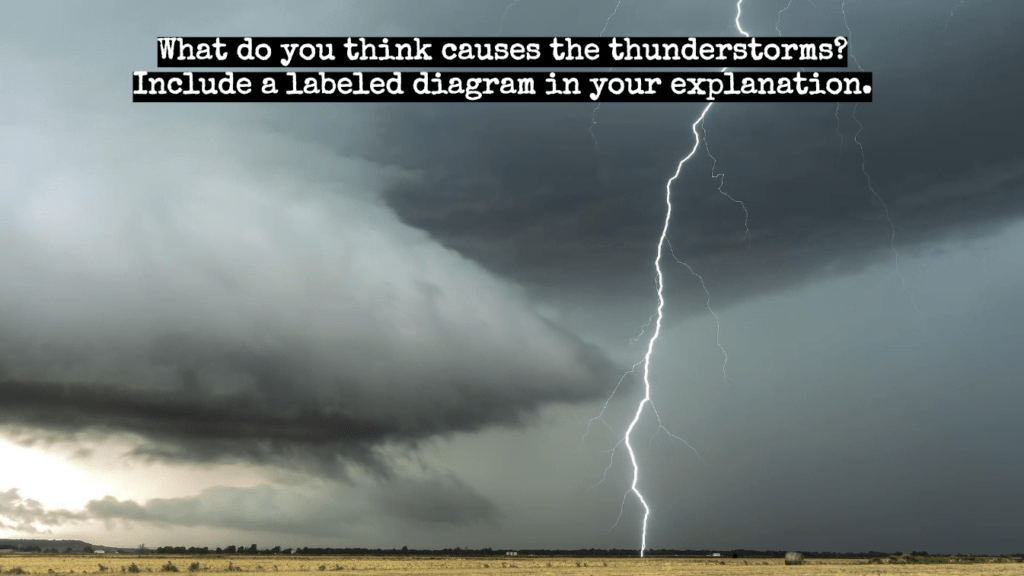For optimal viewing experience, it is recommended to access this page on a computer or large tablet.
BELLRINGERS
ESS2: Earth's Systems
MS ESS2-5
Changes in Weather
- What is the compositions of air?
- Upside down glass of water question. (Air pressure)
- Why do our ears pop?
- What is the difference between a high pressure and low pressure system?
- Weather Map Question: New York City
- Weather Map Question: Denver
- Sea breeze question
- Land breeze question
- What do you think causes the wind?
- What do you think causes the thunderstorms?
- Why do you think Seattle has so many more cloudy and rainy days than most cities?
- Why do you think Eastern Washington is a desert?
- Why doesn't air pressure crush objects?
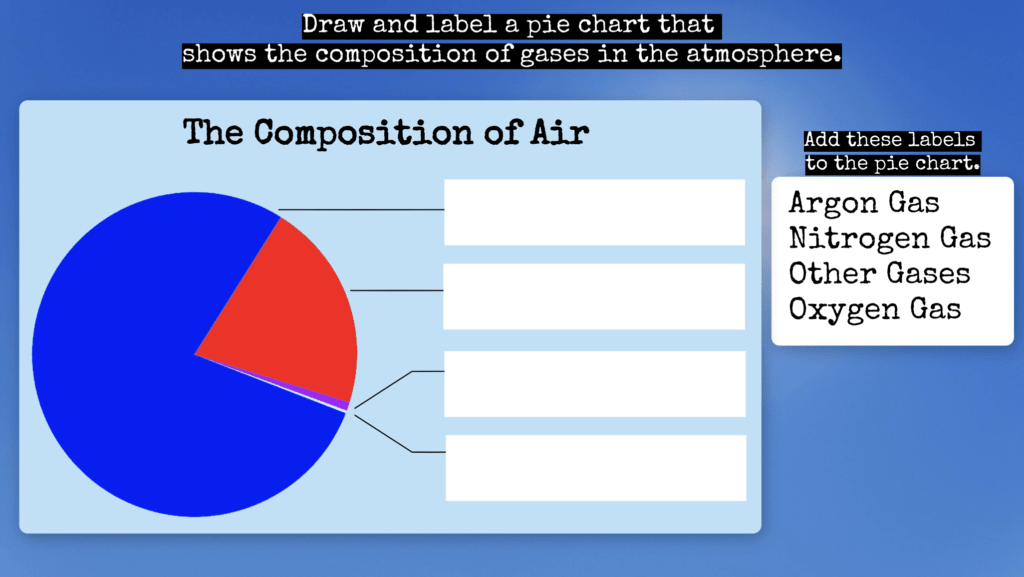
Add these labels to the pie chart: Argon Gas, Nitrogen Gas, Other gases, Oxygen Gas
Common Misconceptions
- Air is made up mostly of oxygen or carbon dioxide.
Additional Resources
Common Misconceptions
Misconceptions identified using AI ChatGPT
Air pressure only affects the weather: Air pressure is the force exerted by the weight of the atmosphere on the Earth’s surface. While it does play a role in weather patterns, it also affects other aspects of our daily lives, such as the operation of airplane, hot air balloons, wind turbines, and many more.
Air pressure is only high in mountainous areas: Air pressure is determined by the weight of the air above a given point and it is affected by both altitude and temperature. At higher elevations, the air is less dense and therefore exerts less pressure. However, temperature also plays a role. A high-pressure system is characterized by cool, dry air, while a low-pressure system is characterized by warm, moist air.
Air pressure changes only occur at the surface: Air pressure changes can occur at any altitude, not just at the surface. In the atmosphere, the pressure decreases with increasing altitude, this is because the weight of the air above decreases with altitude.
Air pressure is the same everywhere: Air pressure can vary significantly depending on location and weather conditions. High-pressure systems are typically associated with fair weather, while low-pressure systems are associated with clouds and precipitation.
Air pressure is constant and unchanging: Air pressure is not constant and can fluctuate depending on weather conditions, due to changes in temperature and atmospheric pressure. High-pressure and low-pressure systems can move around, creating changes in weather.
Additional Resources
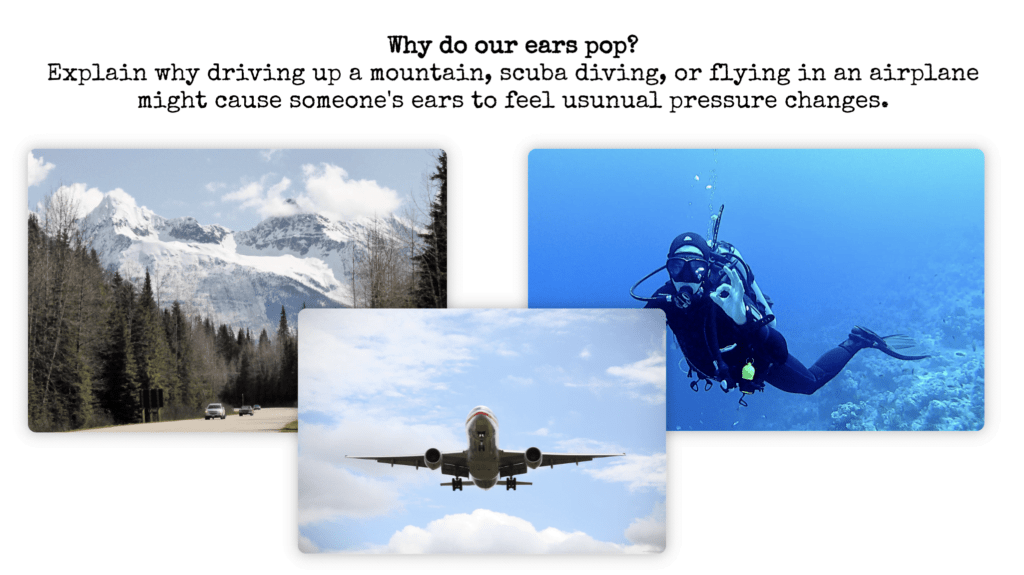
Explain why driving up a mountain, scuba diving, or flying in an airplain might cause someone's ears to feel unusual pressure changes.
Common Misconceptions
Misconceptions identified using AI ChatGPT
Air pressure only affects the weather: Air pressure is the force exerted by the weight of the atmosphere on the Earth’s surface. While it does play a role in weather patterns, it also affects other aspects of our daily lives, such as the operation of airplane, hot air balloons, wind turbines, and many more.
Air pressure is only high in mountainous areas: Air pressure is determined by the weight of the air above a given point and it is affected by both altitude and temperature. At higher elevations, the air is less dense and therefore exerts less pressure. However, temperature also plays a role. A high-pressure system is characterized by cool, dry air, while a low-pressure system is characterized by warm, moist air.
Air pressure changes only occur at the surface: Air pressure changes can occur at any altitude, not just at the surface. In the atmosphere, the pressure decreases with increasing altitude, this is because the weight of the air above decreases with altitude.
Air pressure is the same everywhere: Air pressure can vary significantly depending on location and weather conditions. High-pressure systems are typically associated with fair weather, while low-pressure systems are associated with clouds and precipitation.
Air pressure is constant and unchanging: Air pressure is not constant and can fluctuate depending on weather conditions, due to changes in temperature and atmospheric pressure. High-pressure and low-pressure systems can move around, creating changes in weather.
Additional Resources
Common Misconceptions
Misconceptions identified using AI ChatGPT
- There are several misconceptions about high and low pressure weather systems. One is that high pressure systems always bring fair weather, while low pressure systems bring bad weather. While high pressure systems are often associated with clear skies and dry conditions, they can also bring warm temperatures and humidity that can lead to thunderstorms. On the other hand, low pressure systems are often associated with clouds and precipitation, but they can also bring clear skies and calm conditions.
- Another misconception is that high pressure systems rotate clockwise and low pressure systems rotate counter-clockwise. While this is true in the Northern Hemisphere, it is reversed in the Southern Hemisphere. In both hemispheres, the direction of rotation is determined by the Coriolis effect, which is caused by the Earth’s rotation.
- A third misconception is that high pressure systems are always located at high altitudes and low pressure systems are always located at low altitudes. While high pressure systems are often associated with descending air, they can also be located at lower altitudes, and low pressure systems can be located at higher altitudes.
- It’s important to note that weather patterns are complex, and these misconceptions are simplifications of a complex phenomenon.
Additional Resources
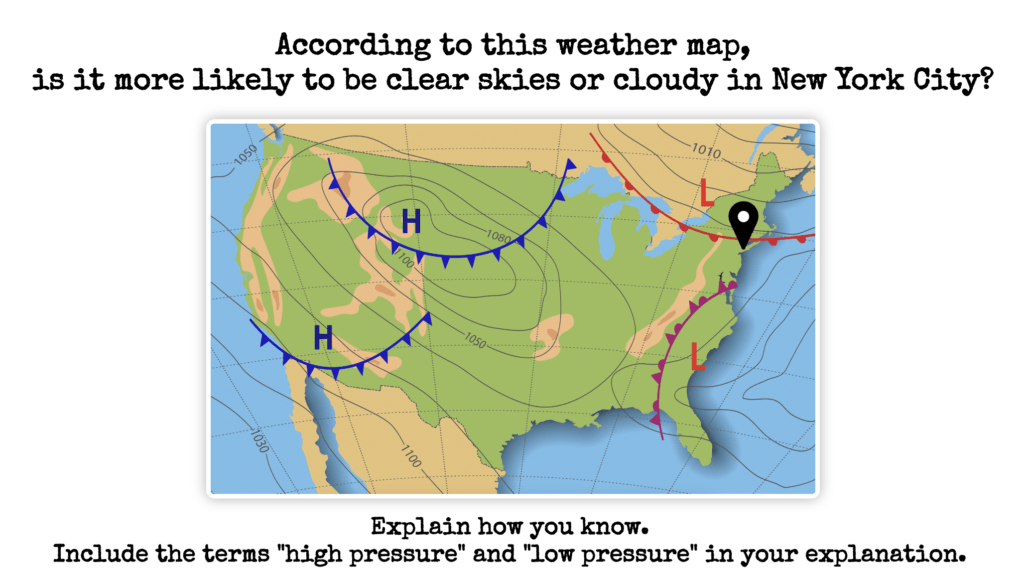
Explain how you know. Include the terms "high pressure" and "low pressure" in your explanation.
Common Misconceptions
Misconceptions identified using AI ChatGPT
- There are several misconceptions about high and low pressure weather systems. One is that high pressure systems always bring fair weather, while low pressure systems bring bad weather. While high pressure systems are often associated with clear skies and dry conditions, they can also bring warm temperatures and humidity that can lead to thunderstorms. On the other hand, low pressure systems are often associated with clouds and precipitation, but they can also bring clear skies and calm conditions.
- Another misconception is that high pressure systems rotate clockwise and low pressure systems rotate counter-clockwise. While this is true in the Northern Hemisphere, it is reversed in the Southern Hemisphere. In both hemispheres, the direction of rotation is determined by the Coriolis effect, which is caused by the Earth’s rotation.
- A third misconception is that high pressure systems are always located at high altitudes and low pressure systems are always located at low altitudes. While high pressure systems are often associated with descending air, they can also be located at lower altitudes, and low pressure systems can be located at higher altitudes.
- It’s important to note that weather patterns are complex, and these misconceptions are simplifications of a complex phenomenon.
Additional Resources
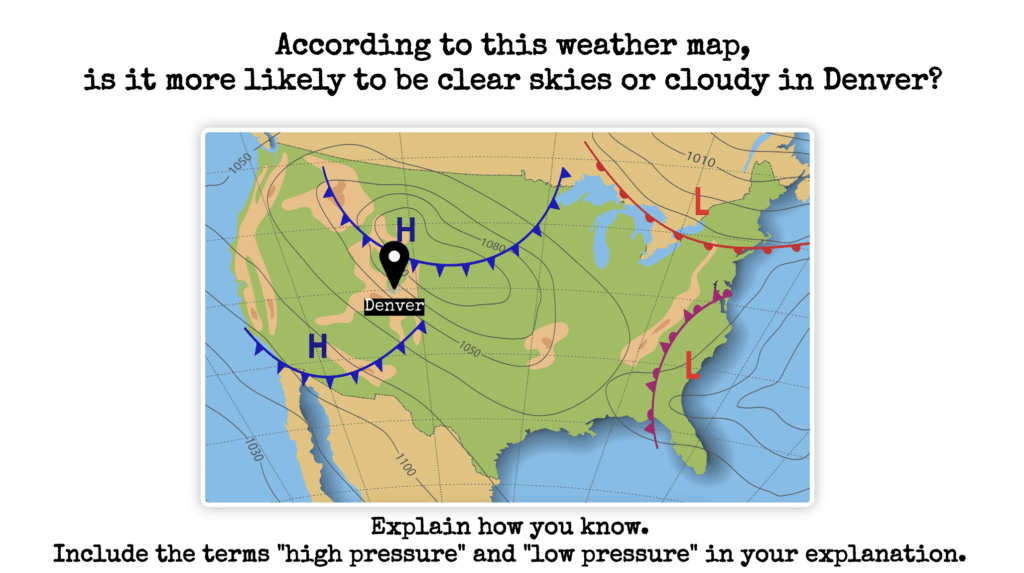
Explain how you know. Include the terms "high pressure" and "low pressure" in your explanation.
Common Misconceptions
Misconceptions identified using AI ChatGPT
- There are several misconceptions about high and low pressure weather systems. One is that high pressure systems always bring fair weather, while low pressure systems bring bad weather. While high pressure systems are often associated with clear skies and dry conditions, they can also bring warm temperatures and humidity that can lead to thunderstorms. On the other hand, low pressure systems are often associated with clouds and precipitation, but they can also bring clear skies and calm conditions.
- Another misconception is that high pressure systems rotate clockwise and low pressure systems rotate counter-clockwise. While this is true in the Northern Hemisphere, it is reversed in the Southern Hemisphere. In both hemispheres, the direction of rotation is determined by the Coriolis effect, which is caused by the Earth’s rotation.
- A third misconception is that high pressure systems are always located at high altitudes and low pressure systems are always located at low altitudes. While high pressure systems are often associated with descending air, they can also be located at lower altitudes, and low pressure systems can be located at higher altitudes.
- It’s important to note that weather patterns are complex, and these misconceptions are simplifications of a complex phenomenon.
Additional Resources
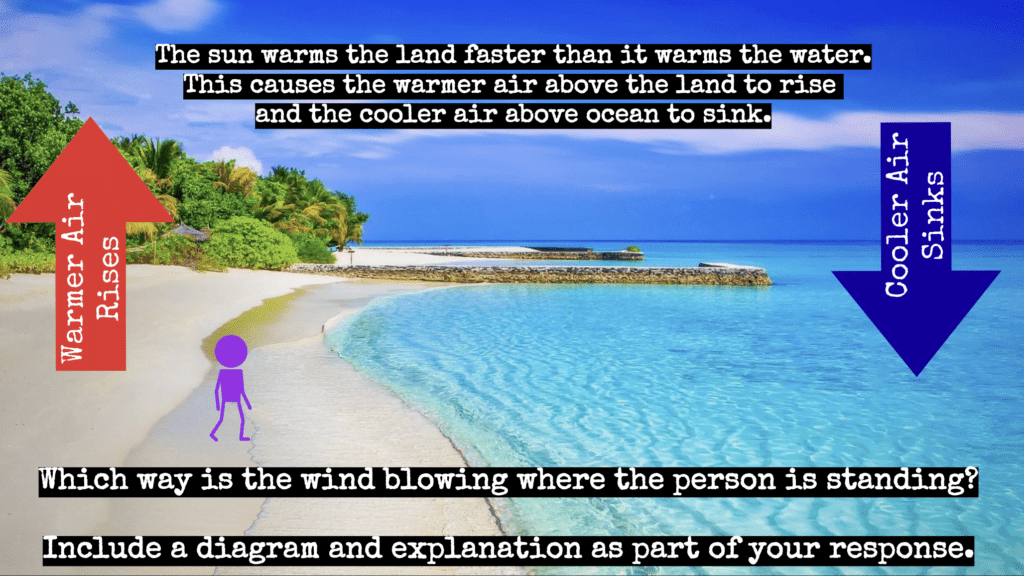
Which way is the wind blowing where the person is standing?
Include a diagram and explanation as part of your response.
Common Misconceptions
Misconceptions identified using AI ChatGPT
Sea breezes only happen in the summer: Sea breezes can occur at any time of year, but they are most common during the summer months when the land is warmer than the sea.
Sea breezes only happen during the day: Sea breezes can occur at any time of day, but they are most common in the afternoon when the land is at its warmest.
Sea breezes only happen at the beach: Sea breezes can occur anywhere where there is a large body of water and a landmass nearby, not just at the beach.
Sea breezes are always cool and refreshing: While sea breezes can bring cooler air to a hot landmass, they can also bring in humid air and increase the risk of thunderstorms.
Sea breezes only blow from the sea to the land: Sea breezes can also blow from the land to the sea, particularly during the night when the land cools down and the sea remains warm.
Additional Resources
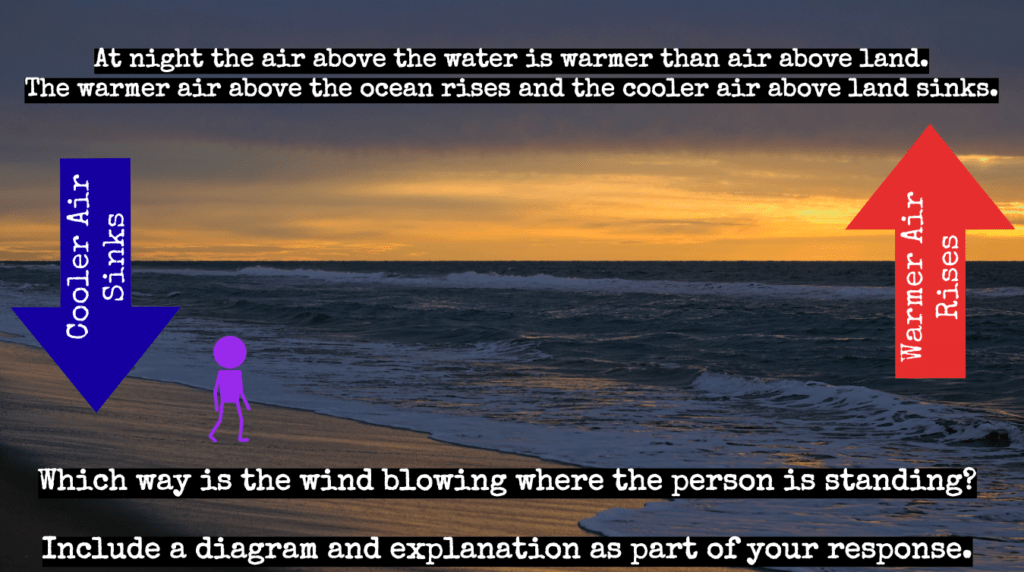
Which way is the wind blowing where the person is standing?
Incude a diagram and explanation as part of your response.
Common Misconceptions
Misconceptions identified using AI ChatGPT
Sea breezes only happen in the summer: Sea breezes can occur at any time of year, but they are most common during the summer months when the land is warmer than the sea.
Sea breezes only happen during the day: Sea breezes can occur at any time of day, but they are most common in the afternoon when the land is at its warmest.
Sea breezes only happen at the beach: Sea breezes can occur anywhere where there is a large body of water and a landmass nearby, not just at the beach.
Sea breezes are always cool and refreshing: While sea breezes can bring cooler air to a hot landmass, they can also bring in humid air and increase the risk of thunderstorms.
Sea breezes only blow from the sea to the land: Sea breezes can also blow from the land to the sea, particularly during the night when the land cools down and the sea remains warm.
Additional Resources
Common Misconceptions
Misconceptions identified using AI ChatGPT
Wind is caused by the movement of the earth: The earth’s rotation does not directly cause wind, rather wind is caused by differences in air pressure. When there is a difference in air pressure between two areas, the air will move from high pressure to low pressure, creating wind.
Wind is caused by the rotation of the Earth: The rotation of the Earth does not cause wind directly, rather it causes the Coriolis effect, which can influence the direction of wind patterns.
Wind is caused by the movement of trees: Trees do not create wind, but they can be affected by it. The movement of leaves and branches in response to wind is caused by the wind, not the other way around.
Wind is caused by the cooling of the air: Air cools as it rises and warms as it sinks, but the temperature difference alone is not enough to create wind. It is the pressure difference caused by the temperature difference that causes wind.
Wind is caused by the movement of water: Water can be affected by wind, but wind is not caused by the movement of water. Wind is caused by differences in air pressure.
Additional Resources
Common Misconceptions
Misconceptions identified using AI ChatGPT
Thunderstorms are caused by the heat of the sun: While heat is a necessary ingredient for thunderstorm development, it is not the sole cause. Thunderstorms form when warm, moist air rises and cools, forming thunderstorm clouds.
Lightning is caused by the friction of the thunderstorm clouds: Lightning is actually caused by the buildup and discharge of electrical charges within a thunderstorm.
Thunderstorms only happen in the summer: Thunderstorms can happen at any time of year, but they are most common during the spring and summer months when warm, moist air is more prevalent.
A loud thunder means the lightning strike is close: Thunder is caused by the expansion of air around a lightning strike, so the loudness of thunder does not indicate the proximity of a strike.
Thunderstorms only happen in the afternoon: Thunderstorms can happen at any time of day, but they are most common in the afternoon when the sun is at its strongest, and the surface is warmest.
Additional Resources
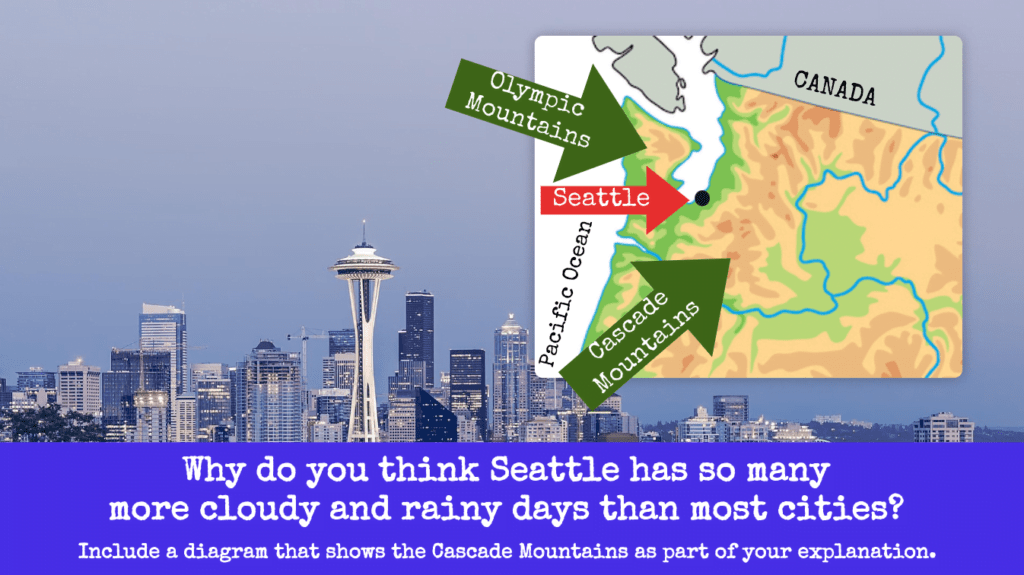
Include a diagram that shows the Cascade Mountains as part of your explanation.
Common Misconceptions
Misconceptions identified using AI ChatGPT
- Seattle is located in a rainforest: Seattle is not located in a rainforest, it is located in the Pacific Northwest and has a temperate marine climate.
- Seattle is farther north than other places so it rains more: Seattle is located at the same latitude as cities like Portland, Oregon and Vancouver, Canada which have similar rainfall patterns. Seattle’s rainfall is primarily caused by its proximity to the coast and its location in the Pacific Northwest region.
Additional Resources
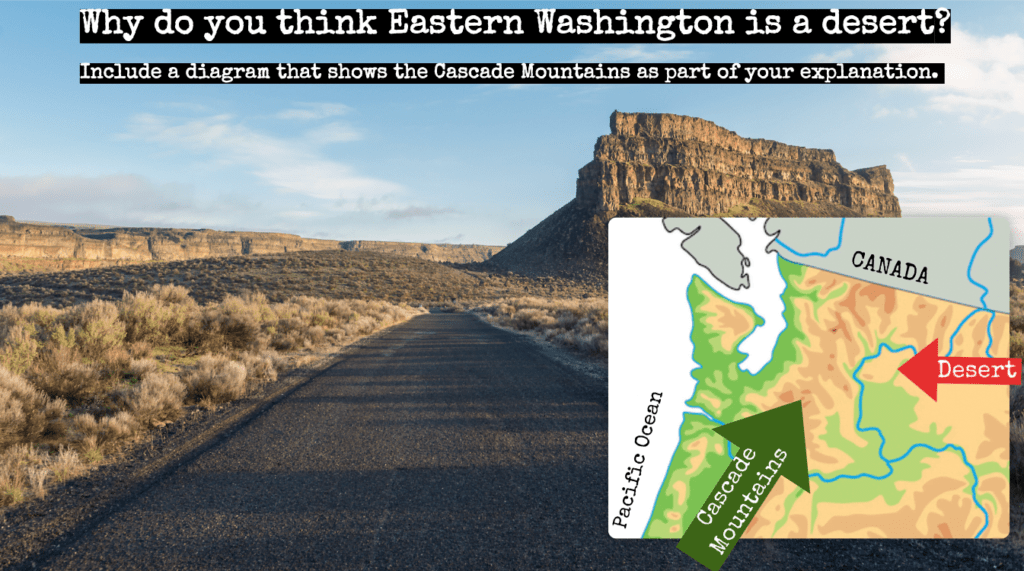
Include a diagram that shows the Cascade Mountains as part of your explanation.
Common Misconceptions
Misconceptions identified using AI ChatGPT
Some people believe that deserts are always hot. While many deserts experience high temperatures, some deserts, such as the Gobi Desert in Asia, can be quite cold.
Some people think that deserts are always sandy. However, deserts can have a variety of landscapes, including rocky terrain, gravel plains, and salt flats.
Some people believe that deserts are lifeless and barren. However, many deserts are home to a wide variety of plants and animals that have adapted to the harsh conditions.
Some people think that all deserts are the same. However, there are many different types of deserts, such as hot and dry deserts, semi-arid deserts, and coastal deserts, each with their own unique characteristics.
Many people think that deserts are only located in certain regions of the world, specifically in Africa and Middle East, but in fact deserts can be found on every continent.
Additional Resources
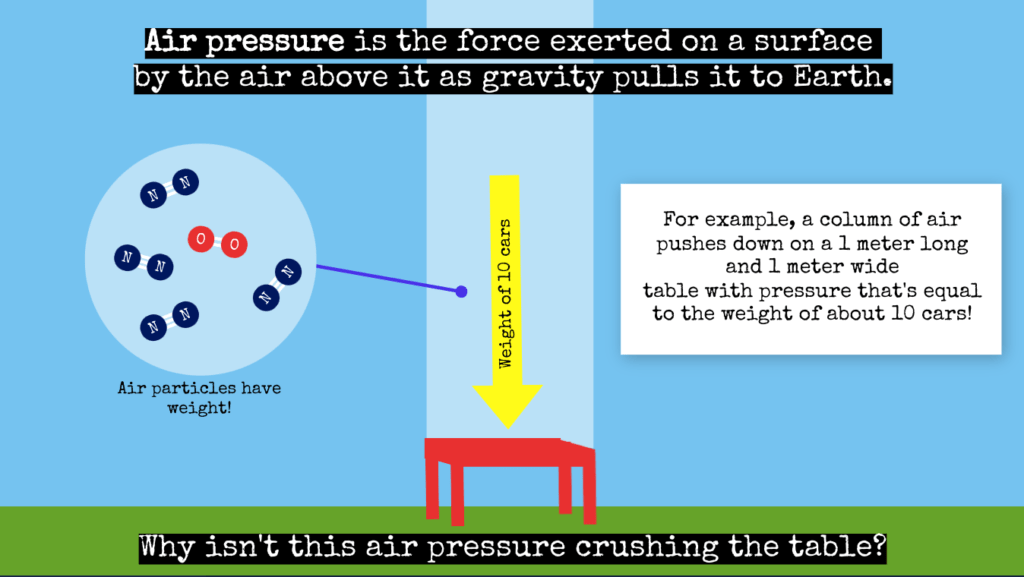
For example, a column of air pushes down on a 1 meter long and 1 meter wide table with pressure that's equal to the weight of about 10 cars!
Why isn't this air pressure crushing the table?
Common Misconceptions
Misconceptions identified using AI ChatGPT
- That air pressure is the same everywhere: In reality, air pressure can vary greatly depending on factors such as altitude, temperature, and weather patterns.
- That air pressure is constant: Air pressure can fluctuate over time, both naturally and as a result of human activities like industrial emissions.
- That air pressure is only affected by the weight of the atmosphere: While the weight of the atmosphere does play a role in determining air pressure, other factors such as temperature and humidity also play a part.


